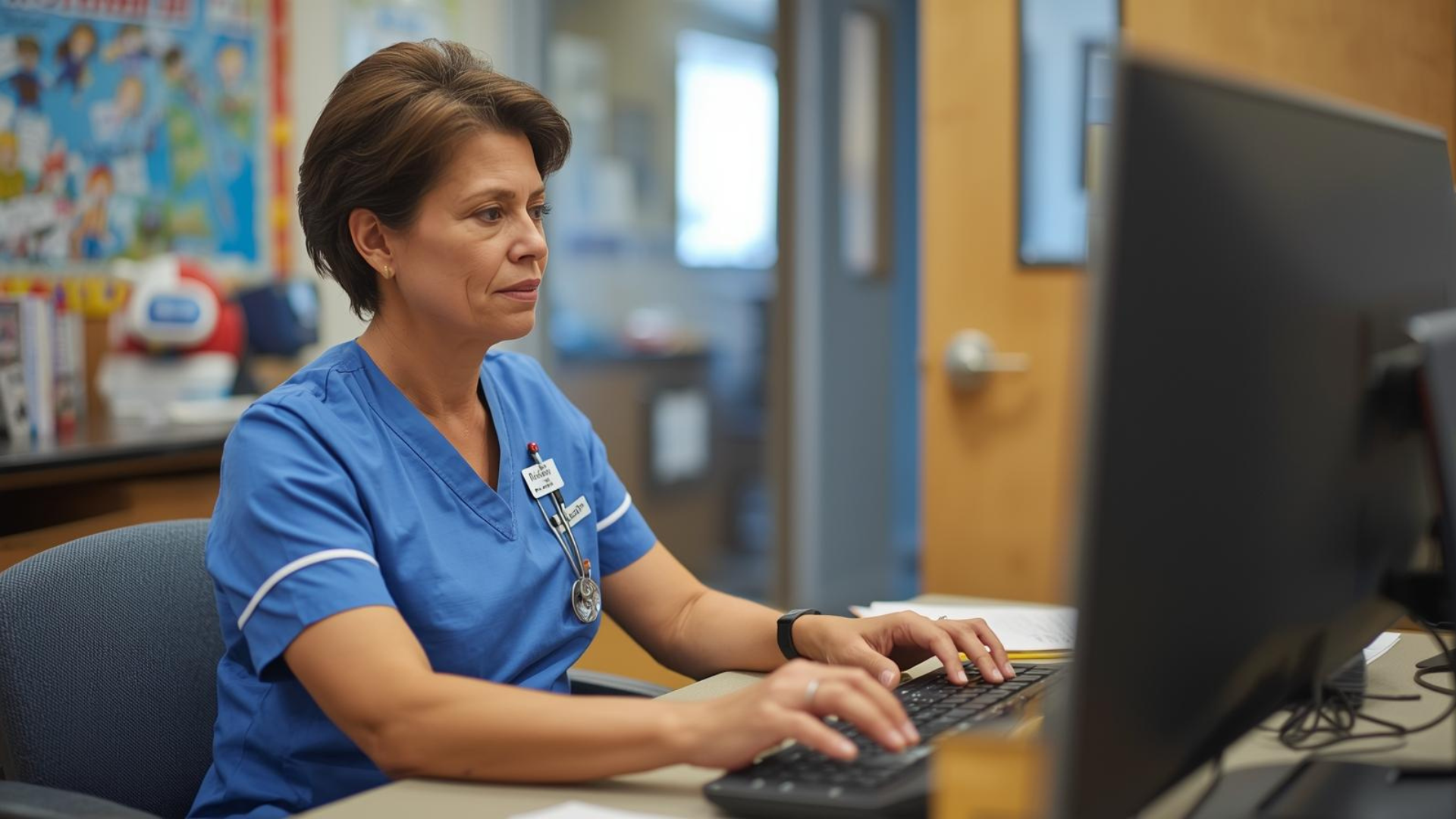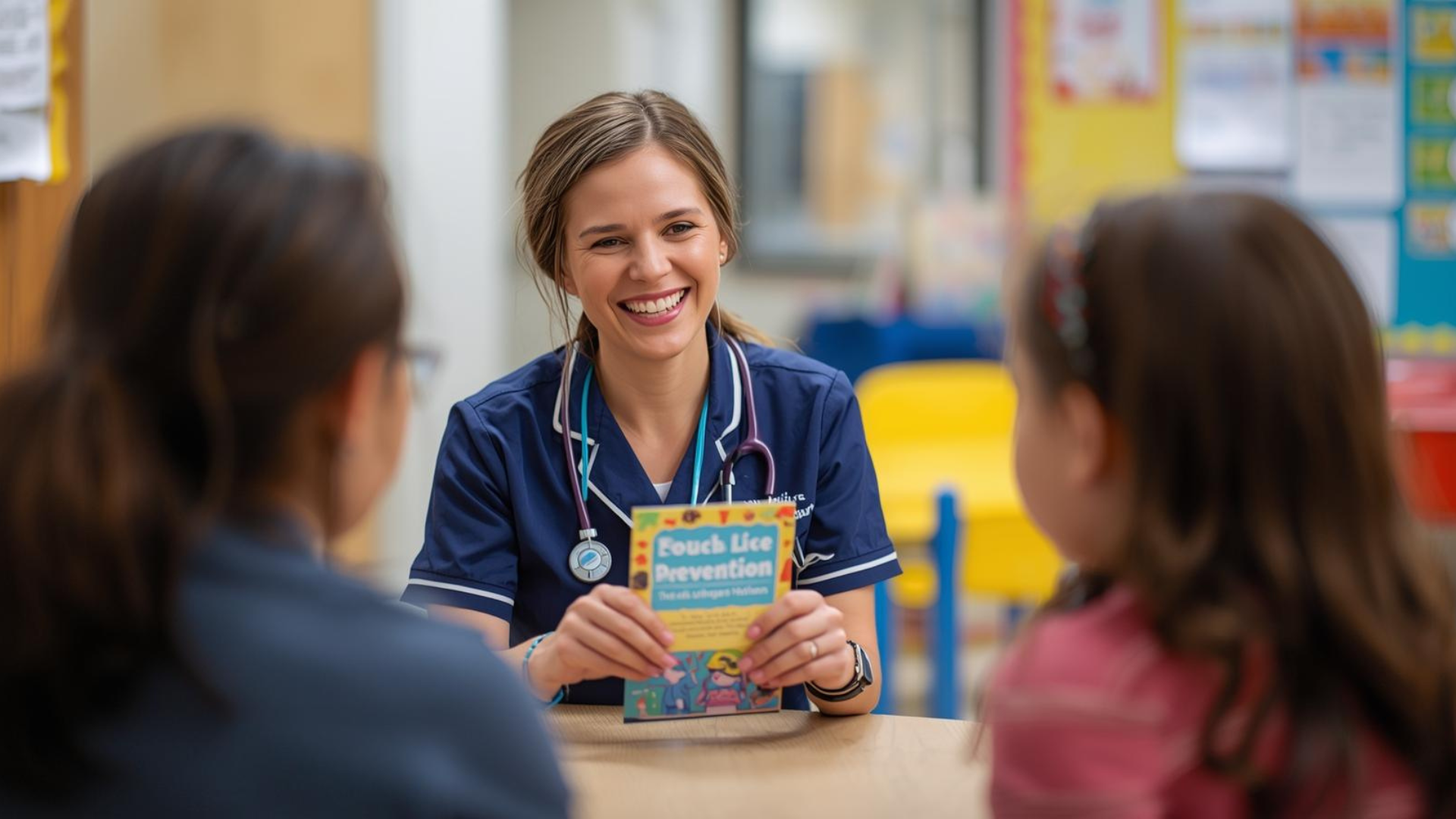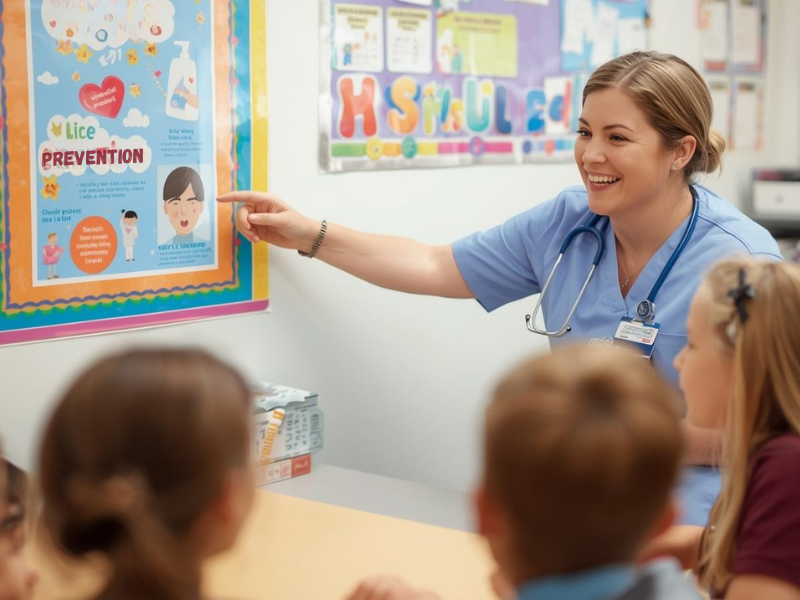When it comes to keeping our schools healthy and our kids learning comfortably, school nurses are real everyday heroes. They do far more than apply band-aids or check fevers, they’re also the frontline defenders against head lice.
Head lice might be tiny, but the stress they bring to families and classrooms can feel huge. That’s why school nurses play such an important role, not just in identifying cases, but in preventing them before they spread. They teach children, parents, and teachers how lice really move from head to head (spoiler: it’s not about being “dirty”), share smart habits like not swapping hats or hairbrushes, and provide reassurance when panic starts to set in.
Their work is as much about education as it is about treatment. By helping students understand simple prevention steps and supporting families through calm, fact-based guidance, school nurses turn what could be a stressful situation into a learning opportunity. They help everyone, kids, parents, and staff, stay informed, proactive, and stigma-free.
As autumn arrives and classrooms fill with cozy sweaters, shared scarves, and close-knit activities, their efforts matter even more. As kids spend more time indoors and closer together this season, school nurses remind us that true prevention begins with awareness, good habits, and a caring school community.
Understanding Head Lice: What Every Parent Should Know
Before diving into prevention, it’s helpful to understand what head lice actually are.
Head lice are tiny, parasitic insects that live on the scalp and feed on human blood. They -spread mainly through direct head-to-head contact, making schools, playgrounds, and after-school activities hotspots for transmission.
Lice do not jump or fly, and having clean hair or using regular shampoo does not prevent infestations. Lice can affect anyone, regardless of personal hygiene or hair care habits.

Common signs of lice infestation include:
- Persistent scalp itching
- Red bumps or irritation, especially behind the ears and along the neckline
- Visible lice or tiny eggs (called nits) close to the scalp
Understanding these basics helps parents and caregivers respond calmly rather than panicking. That’s exactly what school nurses want, knowledge that leads to confidence, not fear.
School Nurses: The First Line of Defense Against Lice
School nurses are often the first to detect lice in a classroom. Their unique position gives them the ability to:
1. Identify Early Signs
With their trained eyes and years of experience, school nurses can often spot the early signs of lice, sometimes even before a child feels the first itch. Early detection can prevent an outbreak from spreading to other students.
2. Educate Students and Staff
Prevention starts with knowledge. Nurses teach children simple, practical ways to prevent lice, like keeping their heads apart during play and never sharing hats, brushes, or hair accessories. Teachers also get reminders about what to look for and how to manage situations discreetly.
3. Communicate With Families
When lice are detected, nurses reach out to parents with care and professionalism. They explain what lice are, how they spread, and what steps to take next, without blame or embarrassment.
4. Coordinate School-Wide Prevention Efforts
During the school year, particularly in the busy autumn and winter months, school nurses often lead educational campaigns, share informative flyers, or give brief classroom presentations to raise awareness and keep students informed.
Prevention Starts at Home
School nurses play a vital role in prevention, but the everyday habits we reinforce at home often make the biggest impact. Parents are partners in keeping lice at bay.
Here are some simple, practical steps to help your family stay lice-free:
1. Make Weekly Head Checks a Habit
Once a week, take a few minutes to look through your child’s hair, especially near the nape of the neck and behind the ears. Use a bright light and a fine-tooth comb. Early detection means easier treatment.
2. Encourage Smart Hygiene Habits
Remind your child that sharing is great, except when it comes to hats, hairbrushes, hair ties, or headphones.
3. Keep Hair Tied Back
For children with long hair, keeping it tied in braids, buns, or ponytails can help minimize direct head-to-head contact.
4. Create Personal Space
Encourage your kids to hang coats and scarves on separate hooks or keep personal items in their own cubbies or backpacks.
These little routines make a big difference and reinforce the lessons school nurses teach at school.
The Role of School Policy in Lice Management
While each school may have its own approach to managing lice, most follow guidance from their local health department or the CDC. School nurses are the ones who ensure that those policies are applied consistently and compassionately.
Policies often include:

- Clear steps for notifying parents when lice are found
- Return-to-school guidelines after treatment
- Preventive education for students and staff
While some schools still have “no-nit” policies (children must be completely nit-free before returning), many now focus on quick treatment and reducing stigma. School nurses ensure that lice-free kids don’t miss unnecessary days of learning.
Their focus is always on student well-being, not punishment or embarrassment.
How School Nurses Partner With Parents
The best outcomes happen when parents and school nurses work as a team. Here’s what that looks like:
1. Reliable Information
Nurses share evidence-based advice that cuts through online myths and unclear home treatment advice.
2. Guidance on Treatment Options
They can guide you through the options, explaining how over-the-counter treatments, prescription medications, and professional lice removal services like LiceDoctors differ, and help you choose the safest, most effective approach for your child.
3. Emotional Support and Reassurance
Finding lice can feel overwhelming. Nurses reassure families that lice are common, manageable, and nothing to be ashamed of.
Through open, compassionate communication, school nurses help make dealing with lice a calmer, less stressful experience for both children and parents.
Why Autumn Is a Peak Season for Lice
There’s something about fall that makes lice thrive. Kids are back in close contact in classrooms, gym activities, and after-school programs. Hats, scarves, and jackets come out, and sometimes get shared.
School nurses understand that fall is a key time to remind students and families about lice prevention. Many use autumn as an opportunity to:
- Send home educational reminders
- Organize “lice awareness” weeks
- Reinforce hygiene and prevention habits with students
Parents can mirror this at home by checking hair regularly and reminding kids of small habits that prevent big outbreaks.
Creating a Lice-Free School Environment
Keeping schools lice-free is a team effort. Here’s how school nurses help make it happen:
- Routine Head Checks: Especially after reported cases.
- Private, Respectful Handling: Ensuring children aren’t embarrassed or singled out.
- Education Programs: Short classroom talks or newsletters to share facts and debunk myths.
- Collaboration with Teachers: Teachers are often the first to notice a student scratching or showing signs of discomfort. School nurses work closely with them, and with parents, to provide clear, practical guidance on the next steps. Their goal is always to handle the situation calmly, respectfully, and with minimal stress for the child.
When prevention becomes part of the school culture, lice lose their power to disrupt learning or confidence.
Common Myths About Lice, Debunked by School Nurses
Misinformation spreads faster than lice sometimes! Here are a few common myths school nurses help correct:
- Myth: Only dirty hair gets lice.
Truth: Lice prefers clean hair, it’s easier for them to grip the shaft. - Myth: Lice can jump or fly.
Truth: Lice crawl. They can’t jump, hop, or fly from one person to another. - Myth: Pets can spread lice.
Truth: Human lice only live on humans. Your dog or cat can’t catch or give you lice. - Myth: Over-the-counter shampoos always work.
Truth: Many lice strains have become resistant to chemical treatments. That’s why professional, chemical-free removal often works best.
By busting these myths, school nurses take fear and shame out of the equation and replace them with understanding.

Practical Lice Prevention Tips from the Experts
To make lice prevention easy and sustainable, here are tips school nurses often recommend, and parents swear by:
- Do weekly scalp checks, especially during the school year.
- Tie long hair back into braids or buns.
- Avoid sharing combs, hats, or headphones.
- Remind kids to keep heads apart during group photos, circle time, or play.
- Wash pillowcases and hats in hot water if an infestation is found.
- Stay calm. Lice are annoying, but not dangerous, and with the right steps, easily managed.
And when in doubt? Call your child’s school nurse for advice. They’ve seen it all and can walk you through what to do next.
When to Call in the Professionals
Sometimes, despite your best efforts, lice just won’t go away. Some strains have built up resistance to common treatments, and re-infestations happen when even a few nits are missed.
That’s when professional help from LiceDoctors can make all the difference.
LiceDoctors provides:
- Chemical-Free Treatments: Gentle, safe for kids, and effective against resistant lice.
- In-Home Convenience: A professional technician comes right to your home, offering privacy and comfort for your family.
- Expert Technicians: Trained to remove lice and nits thoroughly, so you can move on with peace of mind.
Many school nurses recommend professional lice removal when over-the-counter products fail or when parents want guaranteed results. It’s fast, safe, and stress-free.
How School Nurses and LiceDoctors Work Hand-in-Hand
School nurses and professional services like LiceDoctors share the same mission: helping children stay healthy, confident, and in school. Nurses may identify a case early, then guide parents toward reputable, non-toxic options for treatment.
Once families take that step, LiceDoctors’ in-home treatments ensure the infestation is fully resolved, so kids can return to school quickly and comfortably, with no lingering nits and no embarrassment.
It’s teamwork at its best, science-based care from school nurses and hands-on expertise from trusted lice professionals.
Final Thoughts: Working Together to Keep Kids Lice-Free This Autumn
School nurses are the quiet heroes who help keep classrooms running smoothly and families informed. Their role in lice prevention goes far beyond simply spotting an infestation, they educate, reassure, and foster a culture of awareness that empowers children and parents alike. By sharing accurate information about how lice spread, teaching simple preventive habits, and supporting families when cases arise, school nurses make what could be a stressful situation manageable and even educational.
For parents, prevention starts at home. Regular scalp checks, encouraging children to tie back long hair, avoiding shared hats or combs, and maintaining open communication with the school are all essential steps. These habits not only reduce the likelihood of an infestation but also help children develop responsibility and awareness of personal hygiene from an early age.
Even with all these measures, lice can sometimes find their way in. When that happens, it’s important to remember, you’re not alone. Professional help is available, and that’s where LiceDoctors comes in. Their chemical-free, in-home lice removal treatments are safe, effective, and discreet. Experienced technicians provide thorough removal of lice and nits, restoring calm to your household and allowing your child to get back to learning, playing, and enjoying their school day without discomfort or embarrassment.
This autumn, let’s approach lice prevention as a team effort, parents, school nurses, teachers, and professionals working together. By combining education, early detection, smart habits, and professional support when needed, we can significantly reduce the impact of lice in our schools. When knowledge is shared and steps are taken proactively, children stay healthy, families stay calm, and classrooms remain lice-free. Prevention is more than a task, it’s a community commitment, one that keeps kids comfortable, confident, and ready to thrive all season long.
If your child comes home with lice, or you simply want peace of mind, reach out to LiceDoctors, America’s most trusted chemical-free lice removal service and America’s best in-home lice treatment service. Their friendly, experienced technicians come right to your home, helping your family get back to normal quickly and comfortably.
Visit LiceDoctors or call 800-224-2537 to schedule your in-home treatment today.




.webp)
